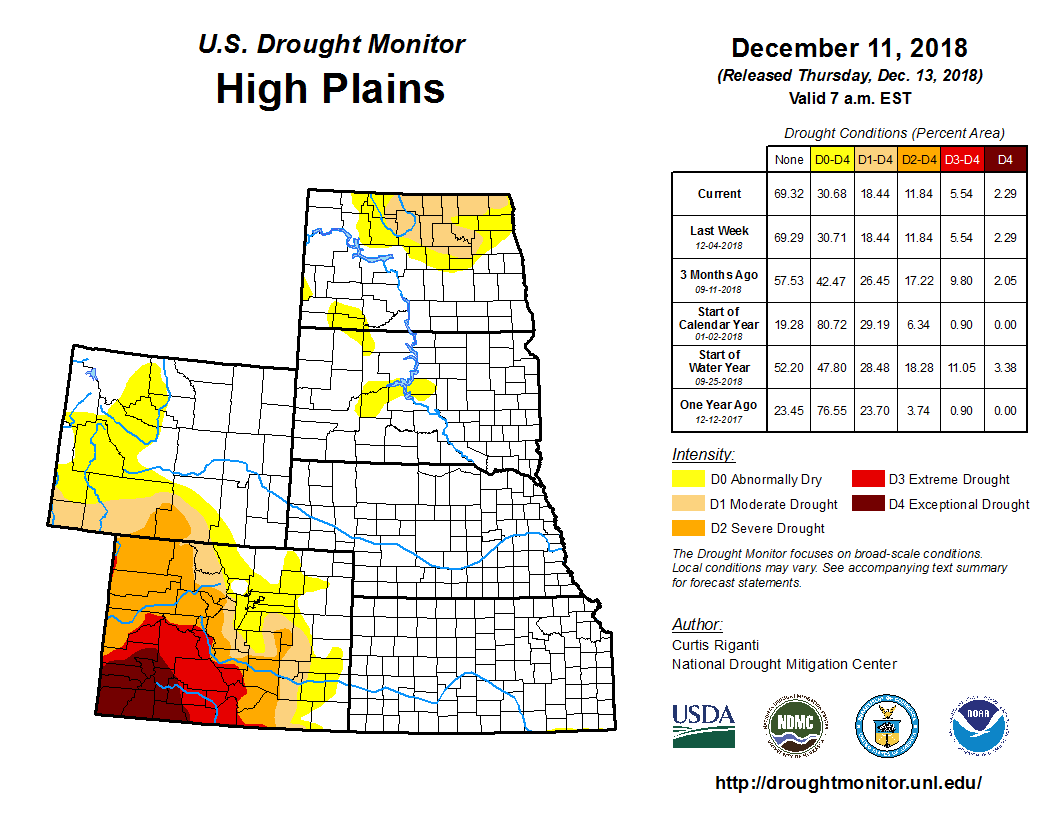Southern areas receive moderate to heavy precipitation; High Plains and Midwest mostly cool and dry

Over the past week, moderate to heavy precipitation fell over much of the southern tier of the United States, according to the Dec. 11 U.S. Drought Monitor released Dec. 13. The highest amounts occurred from eastern Texas through the Carolinas, and relatively high amounts also fell in southern California and southwestern Arizona. Elsewhere, precipitation also fell in the Coastal Ranges from northern California to the Canadian border. Cooler than normal weather occurred over most of the United States east of the Continental Divide, while warmer conditions were found in parts of California, Arizona, and southeastern New Mexico. Improvements in drought conditions occurred in the Mojave Desert regions of California and Arizona, from San Francisco Bay into the Central Valley. Drought developed or worsened in central Nevada, northwestern Oregon, from northeastern Oklahoma into southwestern Missouri, and in the Florida Peninsula.
Weather across the High Plains this week was generally dry, with cooler weather taking place in Nebraska and Kansas, and more variable temperatures occurring in the Dakotas and in the High Plains sections of Colorado, Wyoming, and Montana. Abnormally dry conditions improved in north-central Montana, as long-term precipitation deficits had lessened such that conditions were no longer abnormally dry. Elsewhere, the drought depiction was unchanged.
Weather this week in the Midwest was mostly dry and cool. Some precipitation fell in southeastern Kentucky, but precipitation was quite sparse elsewhere. The only changes to this week’s drought depiction were an expansion of moderate drought into southwestern Missouri and a slight expansion of abnormally dry conditions in southwestern Missouri. These degradations were made where short- and long-term precipitation deficits had grown and surface and groundwater conditions were poor. Elsewhere, the drought depiction remained the same as last week, with only a few other areas experiencing abnormally dry conditions.



